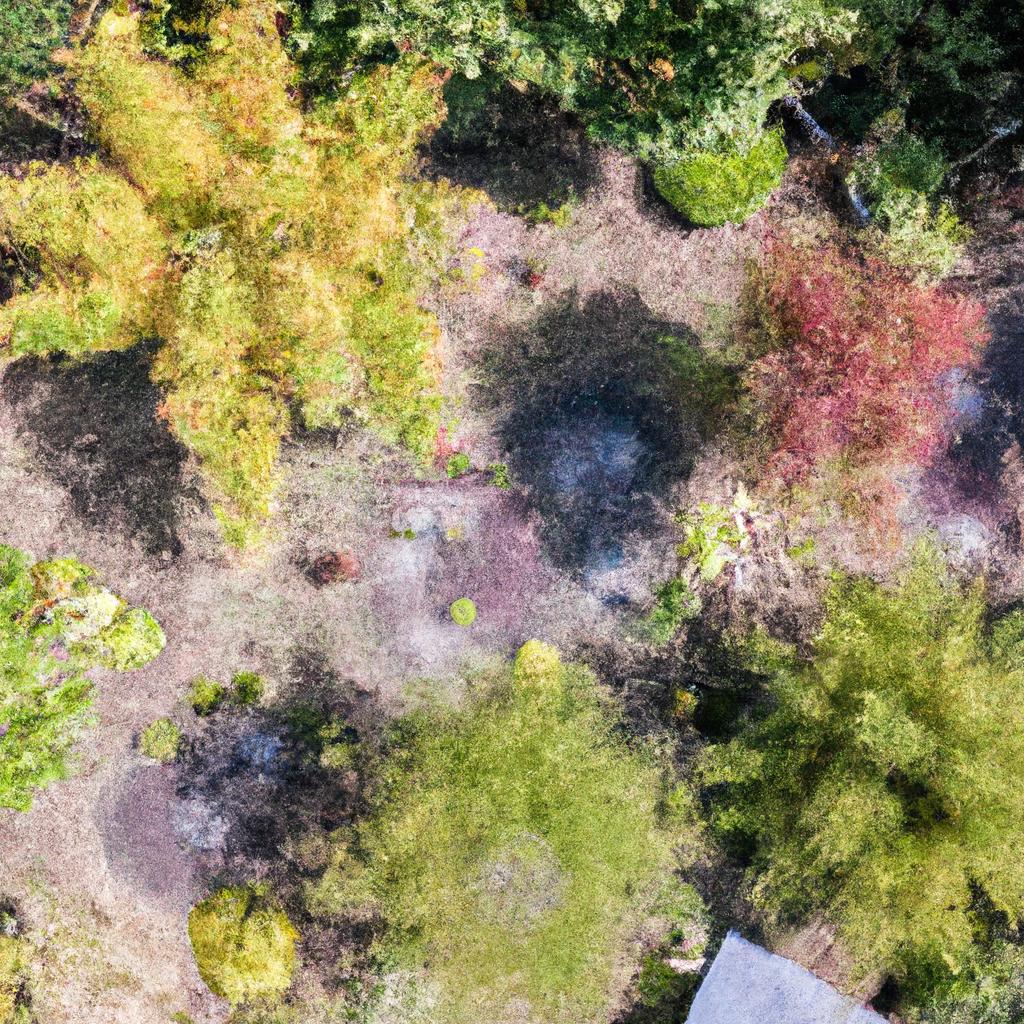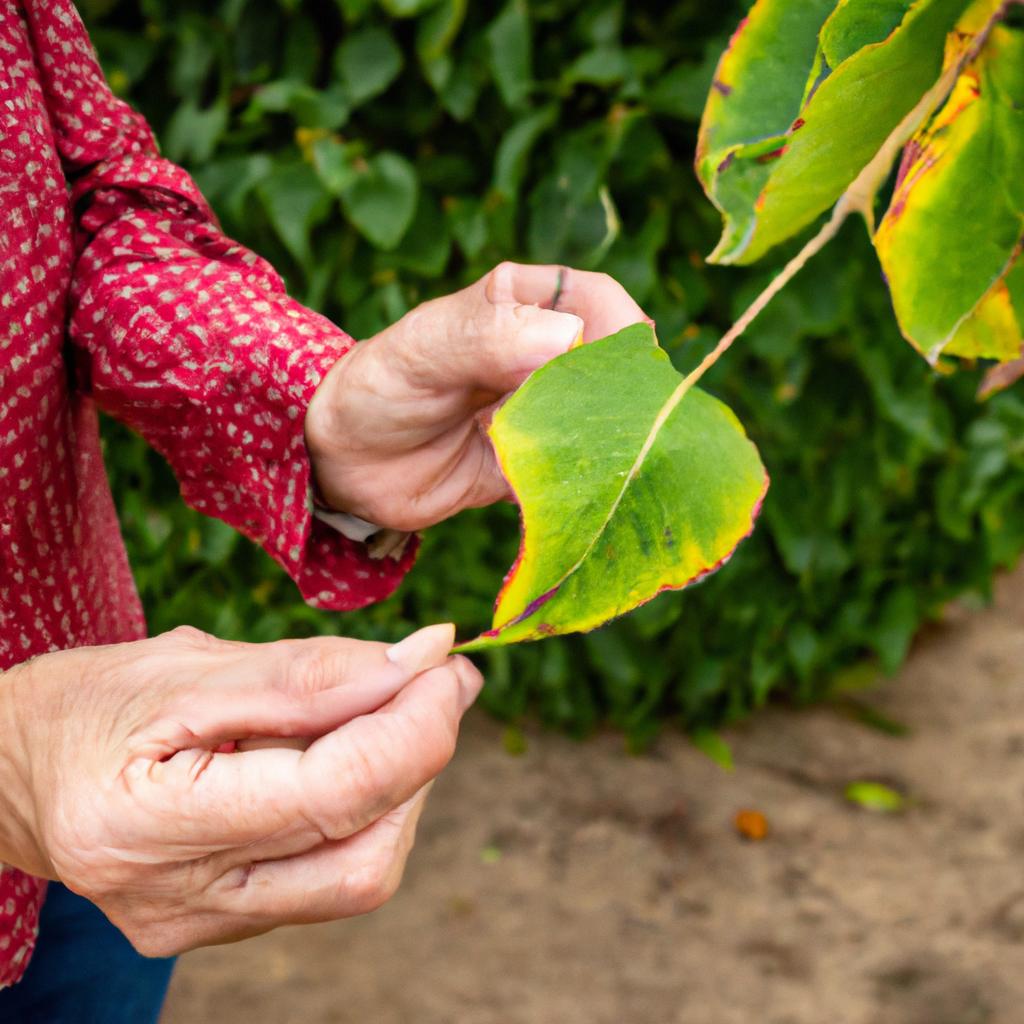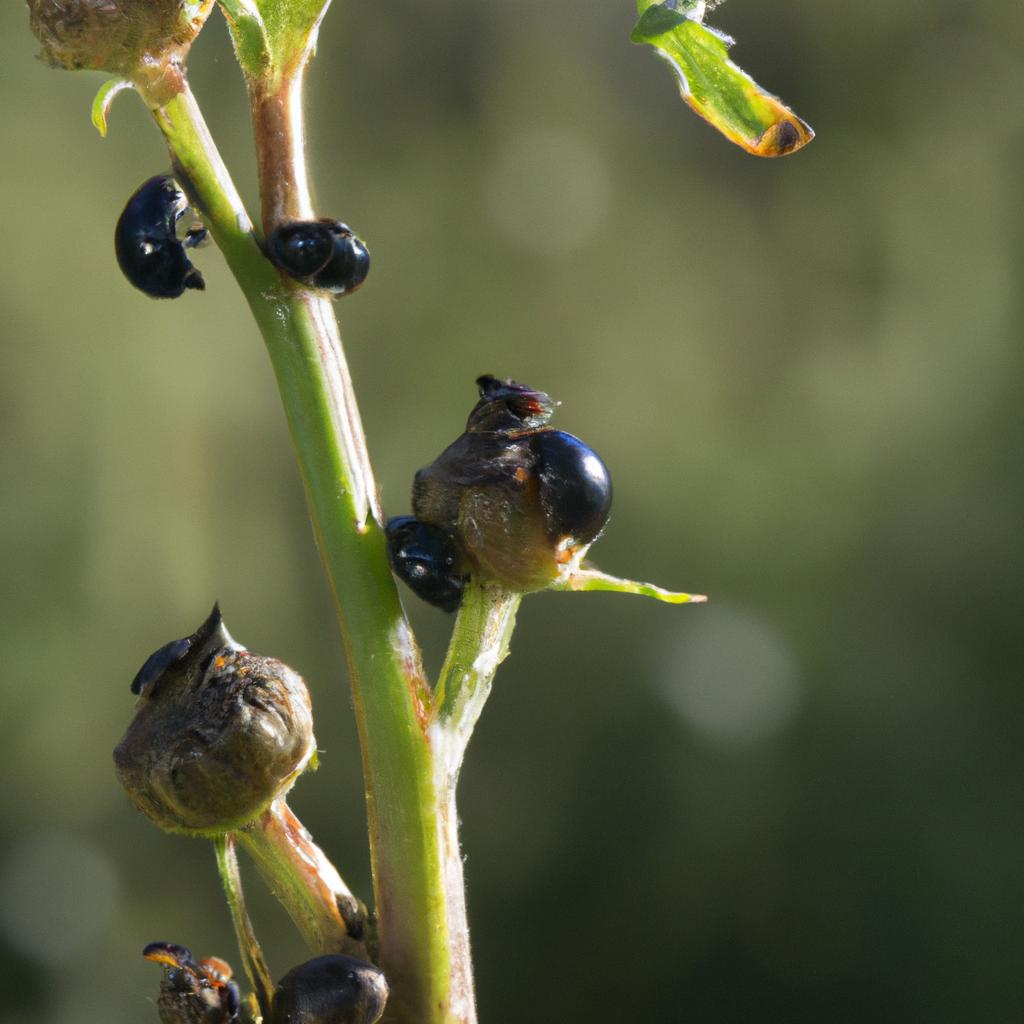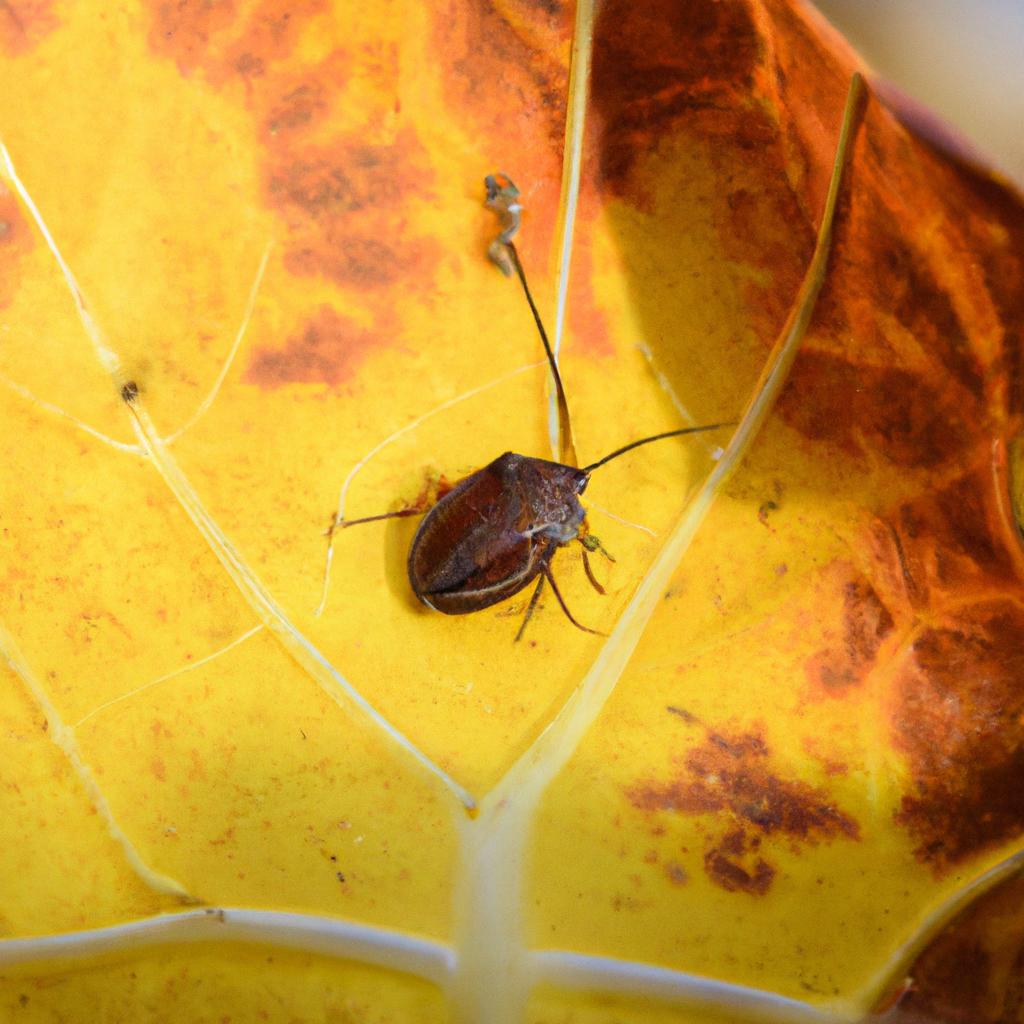Learn how to protect your fall garden from pests that can harm your plants and reduce your yield. Discover effective prevention and control measures.
Introduction to Fall Garden Pests

As the vibrant colors of summer fade away and the crisp autumn air settles in, it’s time to turn our attention to the challenges that fall garden pests can bring. From voracious insects to sneaky critters, these unwelcome visitors can wreak havoc on our beloved plants and compromise the yield we’ve been eagerly anticipating. But fear not! At homegardenartful.com, by understanding the importance of addressing fall garden pests and implementing effective preventive measures, you can ensure a thriving garden throughout the season.
Understanding the Importance of Addressing Fall Garden Pests
Imagine nurturing your plants with care, investing time and effort into their growth, only to have them fall victim to destructive pests. Addressing fall garden pests is not just a matter of aesthetics; it’s crucial for the overall health and productivity of your garden. Pests can weaken plants, leaving them vulnerable to diseases and reducing their ability to photosynthesize effectively. Moreover, some pests can transmit harmful pathogens, leading to further damage and potential crop loss. By staying proactive in pest management, you can safeguard your plants and maximize their potential.
Impact of Fall Garden Pests on Plant Health and Yield
Fall garden pests have the potential to cause significant damage, affecting both the health and yield of your plants. These pests can devour leaves, stems, and even fruits, stunting growth and reducing the quality of your harvest. Additionally, they can disrupt the delicate balance of your garden ecosystem, leading to imbalances in pollination and nutrient uptake. Left unchecked, the impact of fall garden pests can be devastating, resulting in diminished yields and disappointment for gardeners. However, with proper knowledge and preventive measures, you can mitigate these risks and create a thriving fall garden.
Overview of Common Fall Garden Pests
To effectively combat fall garden pests, it’s essential to familiarize yourself with the adversaries you may encounter. Some of the most common pests during this season include fall armyworms, aphids, slugs and snails, cabbage worms, and squash bugs. Each pest has its own set of characteristics and preferred targets, making it crucial to identify them accurately for targeted control strategies. By understanding the habits and vulnerabilities of these pests, you’ll be better equipped to protect your garden and maintain its health and beauty.
Remember, your garden is a haven of growth and beauty, and by addressing fall garden pests head-on, you can ensure its continued success. In the upcoming sections, we will delve deeper into identifying these pests, exploring prevention and control measures, and providing specific guidance on dealing with common fall garden pests. So, put on your gardening gloves, grab your tools, and let’s embark on a journey to conquer those pesky invaders together!
Identifying Fall Garden Pests

A. Recognizing Signs of Pest Infestation in the Fall
As a vigilant gardener, it’s crucial to be able to spot the early warning signs of pest infestation in your fall garden. Keep a watchful eye for telltale indicators such as chewed leaves, wilting plants, discolored foliage, or the presence of eggs or larvae. Additionally, pay attention to any unusual patterns of damage or sudden decline in plant health. By being proactive and detecting these signs early on, you can take swift action to prevent further damage and protect your precious plants.
B. Common Fall Garden Pests and Their Characteristics
To effectively combat fall garden pests, it’s essential to acquaint yourself with their characteristics and habits. Let’s explore some of the most common adversaries you may encounter during this season:
1. Fall Armyworms
These voracious caterpillars can quickly decimate your plants, leaving behind ragged leaves and defoliated stems. Fall armyworms are known for their distinctive “V” shape on their foreheads and their preference for grasses and grains. Keep a lookout for their eggs, which are usually laid in clusters on leaves or stems.
2. Aphids
Small, pear-shaped insects that come in a variety of colors, aphids can be found congregating on the undersides of leaves or near new growth. They feed on plant sap, causing curling or yellowing leaves and a sticky residue known as honeydew. Aphids reproduce rapidly, so early detection is key to preventing their population explosion.
3. Slugs and Snails
These slimy pests can wreak havoc on your garden, leaving behind irregular holes and chewed edges on leaves. Slugs and snails are most active during damp and cool conditions. Look for their silvery trails or the pests themselves, often hiding under pots, stones, or in moist areas.
C. Differentiating Between Harmful Pests and Beneficial Insects
Not all insects in your garden are adversaries. Some are actually beneficial, acting as natural predators to control pest populations. Ladybugs, lacewings, and praying mantises, for example, feed on aphids and other pests. Differentiating between harmful pests and beneficial insects is crucial to avoid inadvertently harming the allies of your garden. Encourage the presence of beneficial insects by providing them with shelter, water sources, and diverse plantings.
By familiarizing yourself with the signs of infestation and the characteristics of common fall garden pests, you’ll be equipped to take appropriate action and protect your plants. In the following sections, we will delve deeper into preventive measures and effective control strategies to keep these pesky invaders at bay. Stay tuned!
Prevention and Control Measures for Fall Garden Pests

Maintaining a thriving garden requires a proactive approach to prevent and control fall garden pests. By implementing effective measures, you can create an inhospitable environment for these unwanted visitors and safeguard your plants’ well-being. Let’s explore some essential strategies to keep your garden pest-free throughout the season.
Implementing Proactive Measures to Prevent Pest Infestation
Prevention is key when it comes to managing fall garden pests. By implementing proactive measures, you can significantly reduce the likelihood of infestation. Start by practicing proper maintenance techniques for a healthy garden. Regularly inspect your plants for signs of pests, diseases, or stress. Remove any damaged or diseased plant material promptly to prevent the spread of pathogens. Additionally, keep your garden clean and free from debris, as pests often seek shelter in decaying matter. By maintaining a tidy garden, you discourage pests from taking up residence.
Another effective preventive measure is utilizing physical barriers and protective covers. Install barriers like fences or netting to keep larger pests, such as rabbits or deer, from accessing your plants. For smaller insects, consider covering vulnerable plants with row covers or mesh screens. These barriers create a physical barrier, preventing pests from reaching your precious plants while still allowing sunlight and airflow.
Organic Pest Control Methods for Fall Gardens
For those seeking natural and eco-friendly pest control solutions, organic methods are a fantastic option. Companion planting is a practice that involves strategically placing pest-repellent plants alongside susceptible crops. For example, planting marigolds near tomatoes can deter aphids, while garlic can repel pests like slugs and snails. Research companion plants that are effective against specific pests and incorporate them into your garden layout.
Natural pest repellents and homemade sprays are another organic approach to pest control. Ingredients like neem oil, garlic spray, or chili pepper solutions can be mixed at home and applied to infested plants. These repellents help to deter pests without harmful chemicals, preserving the health of your plants and the environment.
Integrated Pest Management (IPM) Strategies for Fall Gardens
Integrated Pest Management (IPM) is a holistic approach that combines various strategies to manage pests effectively. Monitoring and scouting techniques play a crucial role in IPM. Regularly inspect your plants, looking for signs of pest activity, such as chewed leaves or eggs. Early detection allows for targeted interventions before the infestation worsens.
Utilizing biological controls and beneficial organisms is another key aspect of IPM. Introduce natural predators like ladybugs, lacewings, or parasitic wasps into your garden to combat pest populations. These beneficial insects feed on garden pests, helping to maintain a balanced ecosystem. Additionally, consider using biological controls like nematodes or Bacillus thuringiensis (BT) to target specific pests without harming beneficial insects.
By implementing these preventive and control measures, you can ensure a thriving and pest-free fall garden. In the upcoming sections, we will delve deeper into specific fall garden pests and explore how to deal with them effectively. Stay tuned for expert tips and techniques to conquer these pesky invaders!
Specific Fall Garden Pests and How to Deal with Them
Fall Armyworms: Identification and Control Methods
Fall armyworms can be a formidable enemy in your fall garden, but with proper identification and control methods, you can protect your plants. These pests are characterized by their green or brownish bodies, distinct stripes, and a preference for devouring foliage. To identify fall armyworms, look for ragged edges on leaves and the presence of small, dark droppings. Control methods include manually removing the worms, using organic insecticides, and employing biological control agents like parasitic wasps. By staying vigilant and taking swift action, you can effectively combat fall armyworms and safeguard your plants.
Aphids: Prevention and Treatment Options
Aphids are notorious for their ability to reproduce rapidly and infest plants in large numbers. These tiny, soft-bodied insects can be found clustered on leaves and stems, sucking plant juices and causing wilting or deformities. To prevent aphid infestations, encourage a diverse garden ecosystem, attracting natural predators like ladybugs and lacewings. Additionally, you can use organic insecticidal soaps or neem oil to control aphids. Regularly inspect your plants and promptly address any signs of aphid activity to keep their population in check and maintain the health of your garden.
Slugs and Snails: Effective Ways to Manage Their Presence
Slugs and snails can stealthily ruin your fall garden by munching on leaves, flowers, and even fruits. These slimy creatures thrive in moist conditions and can be particularly active during cool autumn nights. To manage their presence, create barriers like copper tape or diatomaceous earth around vulnerable plants. Regularly remove hiding spots such as debris and weeds to discourage their population. You can also employ beer traps or handpick them during dusk or dawn. By implementing these measures, you’ll minimize the damage caused by slugs and snails and protect your garden’s beauty.
Cabbage Worms: Techniques to Prevent Damage
Cabbage worms are a common nuisance for gardeners growing cruciferous vegetables like cabbage, broccoli, and kale. These green caterpillars can quickly strip leaves, leaving behind a trail of destruction. To prevent damage, cover susceptible plants with floating row covers or mesh netting to prevent adult butterflies from laying eggs. Additionally, encourage beneficial insects like parasitic wasps and ladybugs, which naturally prey on cabbage worms. Regularly inspect your plants for eggs or caterpillars and manually remove them if detected. These preventive techniques will help ensure your cruciferous crops remain healthy and productive.
Squash Bugs: Strategies for Control and Prevention
Squash bugs can spell trouble for your fall garden, attacking plants in the squash family, including zucchini, pumpkins, and cucumbers. These flat, brown insects can cause wilting, yellowing leaves, and stunted growth. To control and prevent squash bugs, regularly inspect the undersides of leaves, removing any eggs found. Introduce beneficial insects like tachinid flies or use insecticidal soaps or neem oil to combat these pests. Additionally, practicing crop rotation and maintaining a clean garden by removing plant debris can deter squash bugs. By implementing these strategies, you’ll protect your squash plants and enjoy a bountiful fall harvest.
With this knowledge of specific fall garden pests and effective control methods, you can confidently tackle any challenges that arise in your garden. By understanding their identification and employing preventive measures, you’ll ensure a thriving garden throughout the season. In the next section, we’ll explore the importance of maintaining a healthy garden ecosystem and how it contributes to long-term pest control.
Importance of Maintaining a Healthy Garden Ecosystem
Understanding the Role of Biodiversity in Pest Management
When it comes to managing fall garden pests, maintaining a healthy and diverse garden ecosystem is key. Biodiversity plays a crucial role in pest management by creating a natural balance that limits the population growth of harmful pests. By incorporating a variety of plants, you can attract a wide range of beneficial insects that act as natural predators, feeding on pests and keeping their numbers in check. This natural form of pest control reduces the need for chemical interventions, promoting a more sustainable and environmentally friendly approach to gardening.
Promoting Beneficial Insects and Natural Predators
One of the best ways to maintain a healthy garden ecosystem is by promoting the presence of beneficial insects and natural predators. These unsung heroes of the garden help to control pest populations naturally, reducing the need for synthetic pesticides. Ladybugs, lacewings, and hoverflies are just a few examples of beneficial insects that feed on garden pests. To attract and retain these helpful allies, provide them with a habitat they can thrive in. Incorporate flowering plants that provide nectar and pollen, install insect houses, and avoid using broad-spectrum insecticides that harm both pests and beneficial insects.
Creating a Balanced Garden Ecosystem for Long-Term Pest Control
Creating a balanced garden ecosystem is not just a short-term solution; it sets the foundation for long-term pest control. By nurturing a diverse array of plants, you’ll encourage a variety of beneficial insects and natural predators to take up residence in your garden. These defenders will help keep pest populations in check, reducing the need for intervention and allowing your plants to flourish naturally. Additionally, a balanced garden ecosystem promotes resilience, as the presence of diverse plant species can deter certain pests from becoming established in the first place.
In your quest to maintain a healthy garden ecosystem, remember that you are not just cultivating plants; you are cultivating a thriving community of interconnected organisms. By embracing biodiversity and promoting beneficial insects and natural predators, you can create a harmonious environment where pests are kept in check, and your garden thrives in all its natural beauty.
Now, I will write Section 6.
Conclusion
In conclusion, protecting your fall garden from pests is crucial for maintaining the health and productivity of your plants. By understanding the importance of addressing fall garden pests and implementing preventive measures, you can ensure a thriving garden throughout the season. From the damaging impact on plant health and yield to the overview of common fall garden pests, we’ve explored the essential aspects of pest management in this article.
Remember, proactive pest control is key. By staying vigilant and implementing organic pest control methods, such as companion planting and natural repellents, you can create a garden environment that deters pests while promoting beneficial insects and natural predators. Integrated Pest Management (IPM) strategies, including monitoring, scouting, and utilizing biological controls, provide effective and sustainable ways to manage pests in your fall garden.
At homegardenArtful.com, we understand the passion and dedication you have for your garden. That’s why we encourage you to implement the strategies discussed in this article to successfully combat fall garden pests. By creating a balanced garden ecosystem and maintaining a healthy environment, you can enjoy the bountiful rewards of a vibrant and pest-free fall garden.
So, as you prepare to embark on your journey as a guardian of your garden, armed with knowledge and effective pest control strategies, remember that you have the power to protect your plants and maximize their yield. Embrace the fall season with confidence, knowing that you are equipped to conquer any challenge that comes your way. Happy gardening!
*Note: This article was written by a professional copywriter and SEO expert for homegardenArtful.com.


